Sligo, in the province of Connaught, northwestern Ireland 作者: 来源: 发布时间:2021-04-13
I.Population and Area
Population in 2011:17,600
Population in 2016:19,199
Population Density in 2011:1900 people per square km2
Total Area:4.98 sq miles
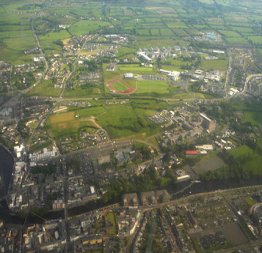
II.Natural Geography (Environment, resource and transportation)
Situated on a coastal plain facing the Atlantic Ocean, Sligo is located on low gravel hills on the banks of the Garavogue River between Lough Gill and the estuary of the Garavogue river leading to Sligo Bay. The town is surrounded on three sides by an arc of mountains, with the Ox Mountain ridges of Slieve Daeane and Killery Mountain to the southeast bordering Lough Gill. The flat topped limestone plateaux of Cope's, Keelogyboy and Castlegal Mountains to the north and northeast and the singular hill of Knocknarea with its Neolithic cairn to the west and the distinctive high plateau of Benbulben to the north.
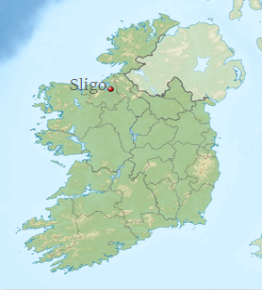
Sligo is an important bridging point on the main north/south route between Ulster and Connacht. It is the county town of County Sligo and is in the Barony of Carbury (formerly the Gaelic tuath of Cairbre Drom Cliabh). Sligo is the diocesan seat of the Roman Catholic Diocese of Elphin. It is in the Church of Ireland Diocese of Kilmore, Elphin and Ardagh.
County Sligo is one of the counties of the province of Connacht. It is part of the Border Region, a region of over 500,000 people which also comprises the counties of Cavan, Donegal, Leitrim, Louth and Monaghan.
Reference website: https://wikimili.com/en/Sligo#cite_note-3
Transportation:
Sligo Airport is the North-West base of the Irish Coast Guard S-92 Search & Rescue Helicopter. Handling enquiries welcome. Sligo Airport welcomes Corporate, Passenger and Cargo Flights in addition to General Aviation. For more information
email: handling@sligoairport.com or phone +353 719168461 Opening Hours - 0730 to 2100 UTC. Airport Information.
III.ECONOMY
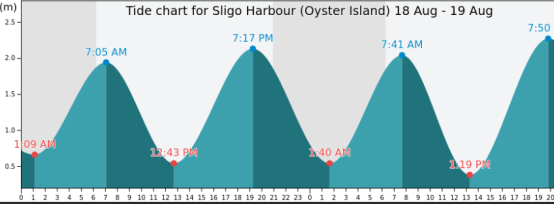
IV.Industrial Characteristics:
1)MSc industrial Pharmaceutical Science(online)-IT Sligo
The award is an MSc of IT Sligo. The course comprises 6 modules, providing teaching in 22 major subject areas and an MSc Research Project. For suitably qualified and candidates who wish to pursue Qualified Person Status, the course fulfils the educational requirements required by …
2)CT Electric Sligo-Sligo-Electrical Wholesalers
Kellihers trade as CT Electric in Galway, Castlebar, Sligo, Ballina, and Athlone, and use the Kellihers brand across the rest of the country. Leading Industry Brands At Kellihers Electrical we source all of our cable direct from the factory gate and ensure it meets stringent quality standards.
V.Attractions
Parke’s Castle is a plantation era castle situated on the banks of Lough Gill, in County Leitrim, Ireland. Originally an earlier fifteenth-century O'Rourke castle, it came into the possession of Sir Roger Parke, who, by 1628, had completed his fortified manor house at the centre of the older Gaelic castle.
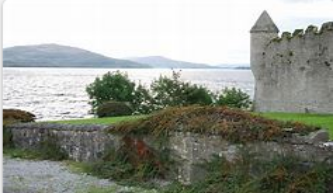
Knocknarea is a large hill west of Sligo town in County Sligo, Ireland. The 327-metre high limestone hill is visually striking, as it is monolithic in appearance and stands in a prominent position on the Cúil Irra peninsula between the bays of Sligo and Ballysadare. At the summit is a large cairn believed to be the burial chamber of Queen Maebh of Connacht. Although it has not been excavated, it is believed to conceal a Neolithic passage tomb.

Reference website:
https://cn.bing.com/maps?q=+Sligo+ireland%27s+attration&qs=n&form=QBRE&sp=-1&pq=sligo+ireland%27s+attration&sc=1-25&sk=&cvid=9389464ECFC6469E
B2B7E084F8E71C88
VI.History
Although an exhaustive history of Sligo is beyond the scope of this site, we will try and give a brief outline. Several excellent books are also available on the topic, which we will reference at the bottom of the page.
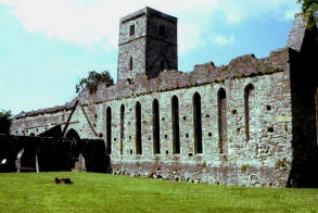
Founding of Sligo
Although reference is made to the place, Sligeach (Shelly River), as early as 537 A.D., it is generally acknowledged that these references are to the river which flows into Sligo Bay and the surrounding area, not the town itself. In 1239, Lord Justice Maurice Fitzgerald invaded the Connaught possessions of O'Donnell, chief of Tirconnell. Fitzgerald drove back O'Donnell as far as Ballysodare, where he set up his quarters. Upon O'Donnell's death, Fitzgerald advanced to Sligo, where he built the Castle of Sligo in 1245.
As was usual, a town spring up around the Castle, which continued to grow as the area was seen as a strategic location, guarding the coastal passage between Ulster and Connaught. A few years later, in 1253, the Abbey of Sligo was also built by Fitzgerald, which he presented to the Dominicans, an order that remains in Sligo to this day.
As was typical in these ancient times, battles for land and power were regular events and in 1257, Godfrey O'Donnell invaded and plundered Sligo, slaying many of Fitzgerald's men. A final battle at Rosses Point saw both men mortally wounded, Fitzgerald dying in Youghal, Co. Cork. For the next two hundred and fifty years, Sligo became a target of feuding chieftains and was plundered and rebuilt many times over. Finally in 1516, the O'Donnells succeeded in recapturing the castle and the town of Sligo. The Castle would finally be demolished by Red Hugh O'Donnell in 1595 in order to prevent it falling into the hands of the English and was never rebuilt.
English Rule
In England, Henry the VIII had taken the throne in 1509, and in 1534, he constituted the Church of England, throwing off the church's allegiance to the Roman Catholic Church. He then turned his attention to Ireland and the submission of the Irish chieftains to the English throne. This marked the beginning of a downward turn in Sligo's fortunes. For years, insurrection and ruin marked the countryside.
One of the most famous historical events of international interest in the Sligo region occurred in 1588 when three ships of the Spanish Armada, fleeing from a failed invasion of England, were wrecked at Streedagh Strand, near Grange, Co. Sligo. Over 1,800 men were lost with many being put to death by English soldiers. The account of the wreckage and the ensuing carnage have been documented by Captain Francisco De Cuellar.
Sligo town (including the Abbey) was burned in 1642 by Sir Frederick Hamilton and 300 women and children were killed by rampaging soldiers. Following Cromwell's invasion, Irish Catholics were forbidden to own land. The dispossessed were shipped to the Caribbean as slaves to the West Indian sugar plantations and 63,000 acres of Sligo land were handed over to Cromwell's soldiers.
The French Revolution of 1789 fired the imagination of the Irish. Poverty and exclusion created perfect conditions for a similar event in Ireland and this found its expression in the rise of the United Irishmen in 1798. The French, eager to export their particular brand of revolution, looked to Ireland to provide the opportunity to harass the ancient mutual English enemy. A French expeditionary force landed in Killala Bay in 1798 under the command of Major General Humbert and defeated the British at the battle of Carrickmagat. However, after his departure, the British took their revenge on the Irish peasantry in a most brutal fashion.
The Act of Union in 1800 consolidated British rule in Ireland and while poverty was widespread, the density of the population also ensured the growth of towns like Sligo. The new merchant and landlord class established the industries of brewing and distilling and the rope, linen and leather trades ensured the growth of the town's infrastructure. The port of Sligo developed rapidly and a railway arrived in the town in 1860.
Disaster struck again with cholera epidemic in 1832 causing more deaths in Sligo than anywhere else in Ireland. People were left dead in the streets and whole families were wiped out. Bram Stoker (the author of Dracula) had his macabre imagination fired by his mother, a Sligo woman, who told stories of coffin makers knocking on doors in the night looking for corpses and of victims being buried alive.
The Famine of 1847 exacerbated this situation when the potato crop failed and no other alternatives crops were made available to the starving peasantry. Again bodies lay in the streets and the emigration ships filled as the countryside emptied. Sligo became a haunted land with no children in the schools and fields that lay bare for years. A journalist at the time coined the phrase "Sligo is no more".
Modern Sligo
Despite these ominous predictions Sligo did make it into the 20th century. The new resurgence in Irish nationalism and self-confidence began in 1916 with the Easter Rebellion and the rise of Sinn Fein. This found its reflection in Sligo in the person of Countess Markievicz who, as a native of Sligo, was granted the freedom of the city in 1917. Sinn Fein, meanwhile, polled 82% of the vote in south Sligo in the 1918 General Election.
However the most famous name associated with the resurgent romantic nationalism is that of William Butler Yeats. Although he was born in Dublin, it is with Sligo that Yeats is most associated. He spent his school holidays in Sligo with his grandmother and listened to her many stories of the ancient Ireland of myth and legend. Following in the Sligo tradition that preceded him, his poetry and storytelling breathed life into the stone monuments and the legendary figures of Irish mythology. He rescued Sligo from obscurity and immortalized its place names in his poetry as the Land of Heart's Desire. In winning the Nobel Prize for Literature in 1923 Yeats inspired thousands of people to seek out that long hidden Ireland and popularized Sligo as a place of romance and rhyme.
Today Sligo is a prosperous town, although it remains steeped in history. Most of the streets of the town have remained unchanged for centuries and were never intended for automobile traffic, a fact that hinders the town's traffic planning. However, the construction of a third bridge has helped alleviate some of these problems and the town remains on course to reinvent itself yet again. The last twenty years have seen a wealth of development in the town, much of which was helped with the Irish government's decision to centralize many of its functions to regional centres in the 1980's.
Since then, the booming Irish economy and the emergence of the Celtic Tiger has done much to fuel the area's economic growth. This prosperity demonstrates how an area that was once so devastated can rejuvenate and renew itself. Many are choosing to locate themselves in the area, drawn by its natural beauty and emerging opportunities. Without losing its charm or forfeiting its romantic past, Sligo is positioned to grow and develop both culturally and economically as the gateway to the north-west of Ireland.
Reference website: http://www.sligo-ireland.com/history.htm
VII.Other information:
The County Sligo Heritage & Genealogy Centre Welcomes You
We offer a comprehensive range of genealogical services and products to people tracing their County Sligo roots from all over the world. The County Sligo Heritage & Genealogy Centre has over twenty-five years of experience in carrying out ancestral research, enabling countless people to discover their family lineage. The researching staff endeavour to give every assistance to enquirers & are fortunate in having a wealth of genealogical information at their disposal.
As a not for profit community and world service your support is greatly appreciated.
The County Sligo Heritage and Genealogy Centre is part of a national network of genealogical centres in Ireland and is a member of the Irish Family History Foundation. We are the officially designated Genealogy Research Centre for County Sligo.
Reference website: http://www.sligoroots.com/
VIII.Contact information
-Mayor
Hubert Keaney
Sligo County Council,County Hall,Riverside,Sligo,Ireland F91 Y763
Tel: 071 9111 111
Fax: 071 914 1119
Email: info@sligococo.ie
Reference website: https://www.sligococo.ie/YourCouncil/
